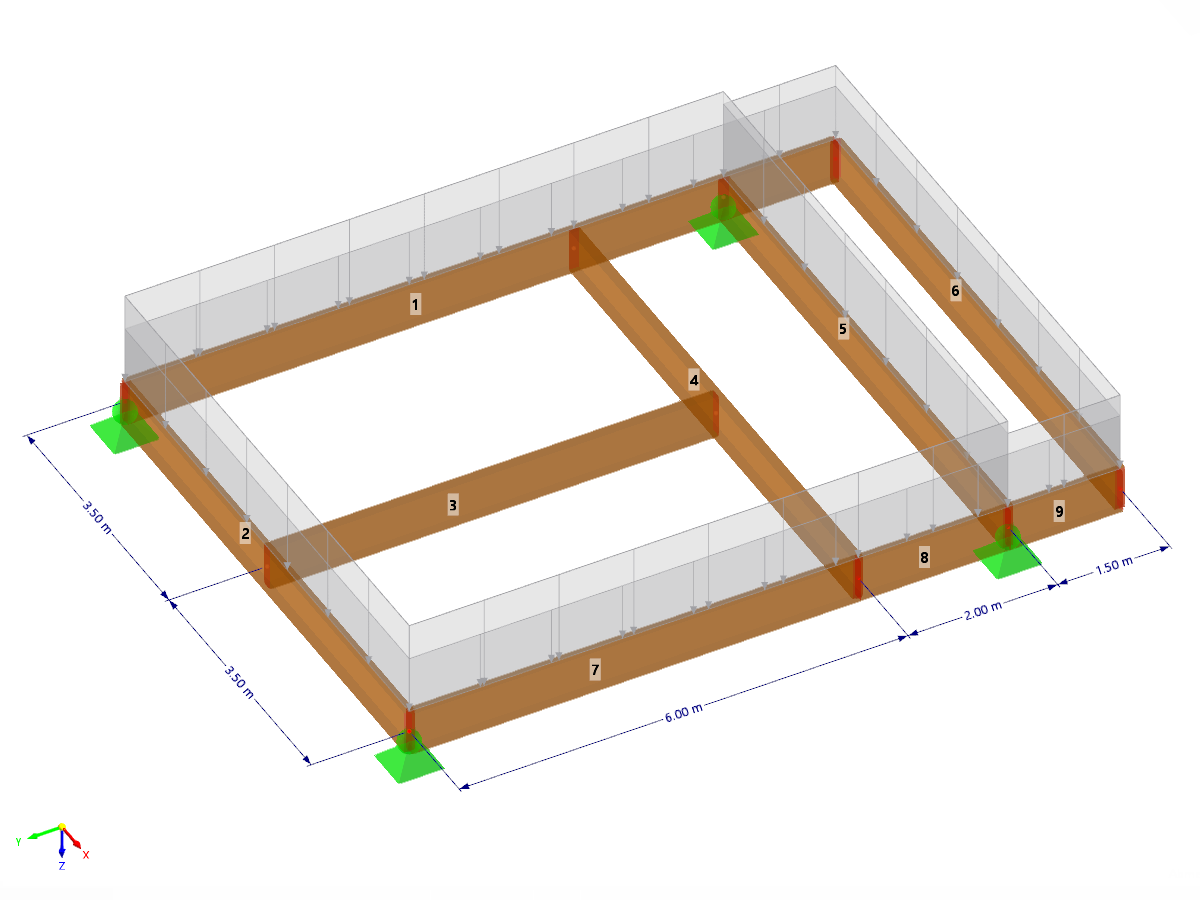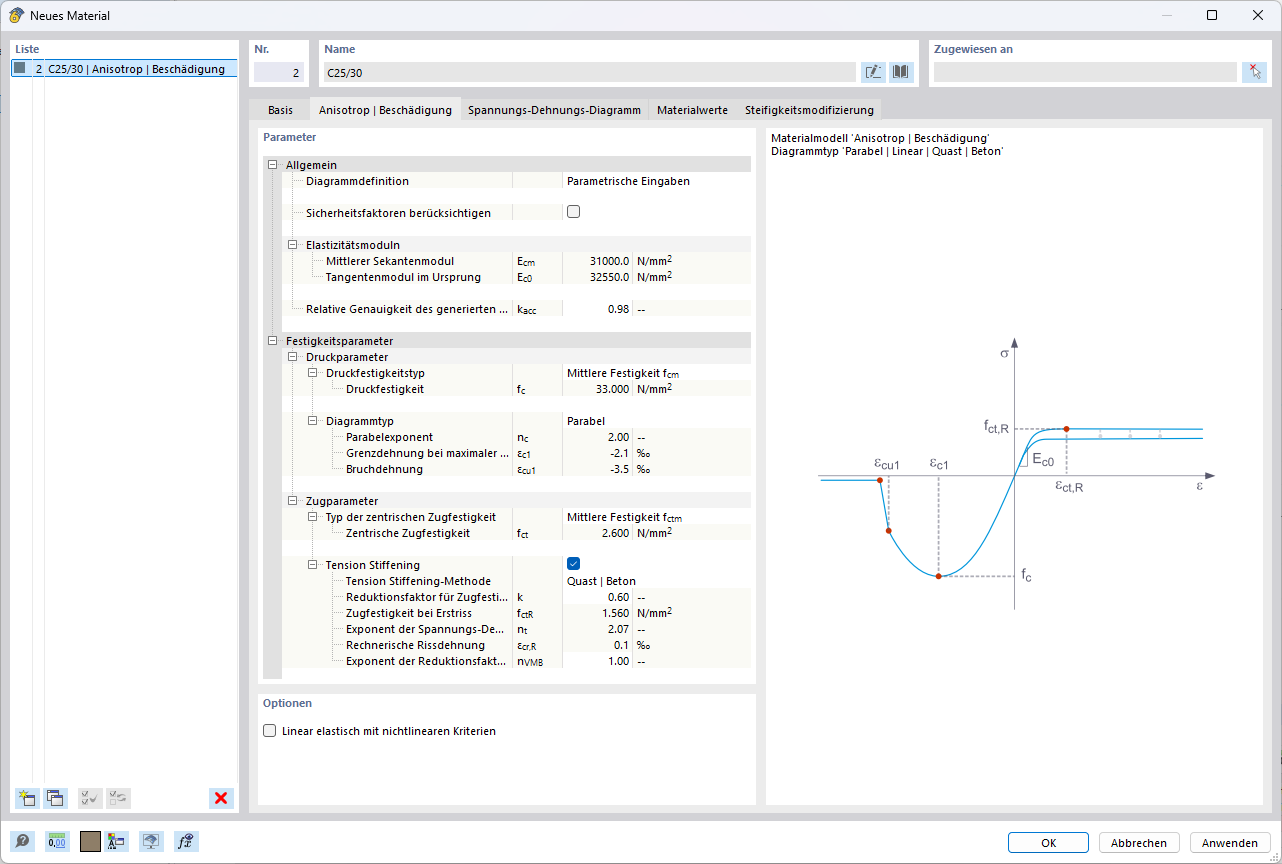To control the graphical display of surface strains available with the equivalent stress hypothesis according to von Mises, select Surfaces → Strains in the Results navigator. Table 4.29 shows these strains in numerical form.
The table shows the equivalent strains sorted by surfaces. The results are listed in reference to the grid points of each surface.
The numbers of the grid points are listed by surface. For more information about grid points, see Chapter 8.13.
Table columns B to D show the coordinates of grid points in the global coordinate system XYZ.
The approaches for the planar condition of strain described in Chapters 8.22 to 8.25 are available for selection in the Results navigator. The approach by von Mises is also called "shape modification hypothesis". It assumes that the material fails when the shape modifying energy exceeds a certain limit. This energy is the type of energy that causes a distortion or deformation of the object (see Chapter 8.22).
The strains according to von Mises for the plane condition of strain have the following meanings:
|
ε+,Mises |
Equivalent strain on the positive side of the surface (i.e. side in direction of positive surface axis z) |
|
ε−,Mises |
Equivalent strain on the negative side of the surface |
|
εMises |
Maximum equivalent strain on the positive or negative side of the surface (columns E and F) |

























.png?mw=350&hash=87067b88e84e78e23f7a538dec586f8442297bd4)











_1.jpg?mw=350&hash=ab2086621f4e50c8c8fb8f3c211a22bc246e0552)



-querkraft-hertha-hurnaus.jpg?mw=350&hash=3306957537863c7a7dc17160e2ced5806b35a7fb)